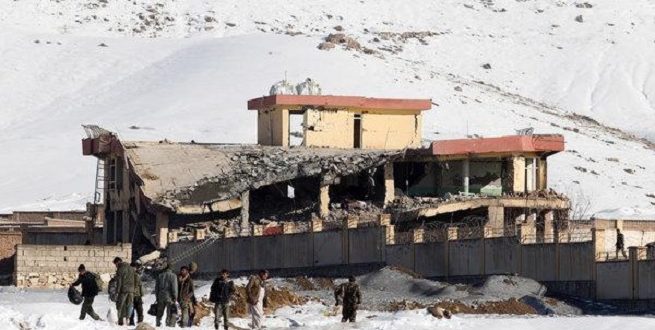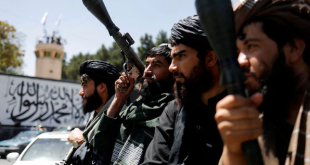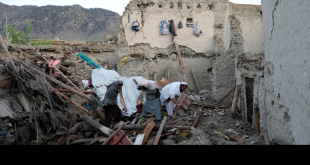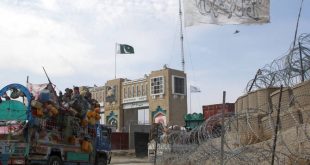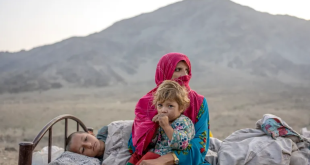By Masom Jan Masomy
Since the National Unity Government (NUG) consisted under Mohammad Ashraf Ghani presidency in 2014, the Afghanistan’s war goes up the highest peak. Taliban increased its control over the vast land of Afghanistan, where the war extended to larger cities, collapsed some of them by Taliban. Kunduz province, in the north of Afghanistan, for the first time, falls into the hands of Taliban on September 28 2015. It was the first victory for Taliban captured a city of a famous province since 2001. In May 2018, the city of Farah province, in western Afghanistan, came under Taliban’s attacks from everywhere, it was about to fall into Taliban hands, but the attacks were rebuffed by Afghan national security and defense forces (ANSDF) following heavy clashes for many days. In August 2018, Taliban started their heavy and coordinated attacks on the capital of Ghazni province, an east-central part of the country. The collapse of Ghazni was surprisingly a questionable issue, it was seemed Taliban may gain headway in their aggressive assaults but the violence just resulted in heavily casualties. The emerge of ISIS is also known DAESH in eastern part of Afghanistan, particularly in Nangarhar province was formidable threat to the national security for which Afghan security forces have steadily been engaging in military operations to eradicate this newly terrorist group and avert its expanding in other parts of the country.
The US president Donald Trump war strategy on Afghanistan of August 21 2017, aimed to deploy around 3000 US troops added to 11000 troops already there. It had mainly two goals to advice, train and assist the Afghan security and defense forces for combating operations, the other goal – to exert military pressures on Taliban in battlefields through grounds operations and airstrikes together with Afghan forces. Rex Tillerson, the secretary of state released a statement after Trump’s remarks that US was making clear the Taliban will not win on the battlefield. “The Taliban has a path to peace and political legitimacy through a negotiated political settlement to end the war,” Tillerson said in a statement. It was in common a goal of US Trump’s administration to end the US war in Afghanistan through peace talks whereas it was frankly clear to the US politicians and military experts that the win of war via military is impossible.
Despite of increase violence Afghan government always sought Taliban to find solution to the war together through peace talks – During February 28 2018 Kabul Conference, President Ashraf Ghani made a proposal that his government will recognize the Taliban as a legitimate political group, he also offered a cease-fire, release of prisoners, preparing Afghan passports for them, an office in Kabul for Taliban and removal of sanctions. “We are making this offer without any preconditions in order to pave the way for a peace agreement,” insisting that Kabul “will consider the Taliban’s view in the peace talks.”Ghani said. Taliban has repeatedly rejected peace negotiations with Afghan government, and paid preference to direct negotiations with the United States first.
The US foreign ministry officially announced Zalmay Khalilzad, the former US ambassador to Afghanistan and Iraq as the special negotiator with the Taliban in September 2018. Khalilzad was given the mandate to start peace negotiations with Taliban in order to end the US-led longest war in Afghanistan. The first official round of peace talks held on October 12 2018 in Taliban’s Doha-based office, in Qatar between US and Taliban negotiating teams. Still, officially ten rounds of peace talks have been held by US and Taliban with the three months delay – revoked peace talks with Taliban by US president Trump in September on account of killing a US service member including 12 Afghans in a suicide bomb blast claimed the responsibility by Taliban after nine rounds peace talks.
Since inception of peace negotiations between US and Taliban, it has been almost fifteen months in which the violence brought out huge civilians casualties including government military troops and Taliban across the country. Announcing a security plan namely “Khalid Operation” by Afghan government in March, and immediately “Alfatha Operation” or conquer from Taliban for spring offensives, also, from time to time – the US president Donald Trump orders to US troops to increase the airstrikes on Taliban insurgents are counted the effects of accelerating the violence amidst peace process. All sides during peace process concentrated mostly on war in order to prove the force to each other use military pressures and win privileges in peace process but it apparently created poverty and misery in the country where many suffered families had to flee their areas and moved to other parts with no shelter. According United Nations annual reports on civilian casualties of Afghans on the 2018 year shows the 11 percent and 5 percent increase of deaths and injuries compared to 2017. As the year of 2019 had associated with the hopes of Afghans in bringing peace – at least, the expectations were of warring sides have might agreed to a ceasefire – ended with deadly attacks. Based on the United Nation report on civilian casualties, released that more than 8,200 civilians casualties – 2,563 killed and 5676 injured. Only 1,174 and 3,139 civilians were killed and wounded from July 1 to September 30. It was the year of which nine rounds of peace talks were held by US and Taliban in Doha. Overall the year, the war was intensified and the warring parties did not consider paying attention to civilians’ lives – totally brutal in their raids particularly the ISIS, from emerge of it still responsible of many heinous attacks, suicide blasts, as well as killing innocent families of rural areas in Nangarhar province, eastern part of the Afghanistan alongside Durand line with Pakistan. In a report of Human Rights Watch Commission of United Nations, in the first nine months of year, about 8000 bombs had fallen in US airstrikes on the country killed more than 800 civilians of which 250 are the children. Based on the report of UNICEF,“in the first nine months of 2019, an average of nine children were killed or maimed everyday in Afghanistan”. This shows that the warring parties don’t have mercy on the civilians including children and women of the country even they forget the international humanitarian and human rights laws.
Drones airstrikes of US troops, night operations of Afghan security forces, incorrect information, suicide bomb blasts of Taliban and ISIS in crowded sites of people, unknown rockets fires, and explosives on Roads are the main elements that have taken innocent ones lives in US Afghan government joint operations, as well as the Taliban and ISIS continuous attacks. Although, Afghan government, US and international community repeatedly have focused on violence reductions particularly in peace process, but it has never responded from Taliban to reduce the violence. Starting of 2020, there have been wider hopes (as it has been hopes in 2019) for a permanent peace in which US and Taliban may sign a peace deal in near few days that will push the peace talks further for ending the war. Hence, the US, Afghan National Unity government (NUG) and Taliban have to choose flexibility in their positions during peace process. Afghanistan’s National Unity Government (NUG) have to work on domestic level with political leaders, politicians, oppositions of government and civil society activists to have a comprehensive consensus for peace negotiations with Taliban after signing peace deal with US.
Though, hopes are stronger in 2020 for peace on regional and international level including inside Afghanistan with the association of Afghans’ demands and aspirations. Therefore, the warring parties should not focus on violence this year as the previous years – affects peace process. The opportunities, for peace, are well prepared than any other time, if these opportunities are either missed or faced with challenges then the 2020 year would be the gory deadliest year for Afghanistan where the only victims would be Afghan civilians. In mean time, two opposite things – violence and peace talks may not be helpful simultaneously, it further complicates the peace process with obstacles, on the other hand, it is caused of civilians’ casualties as well as Afghan security forces and Taliban who also represent of Afghan families. In the long run, peace talks between the engaged sides came to fail and the war would protract for years.
Masom Jan Masomy is the Research Assistant in Journalism Institute, at Afghanistan Academy of Science and currently M.A. Student of South Asia Studies
 Afghanistan Times
Afghanistan Times
